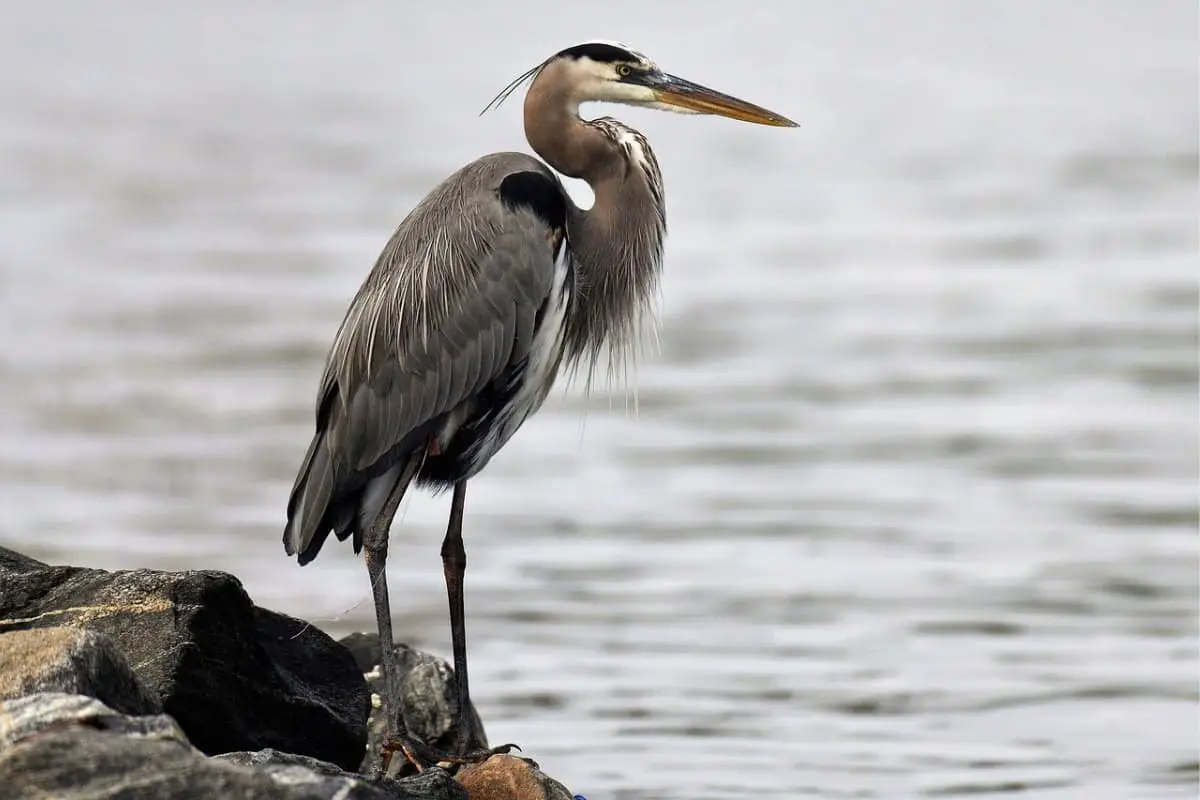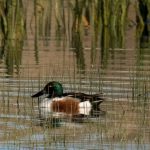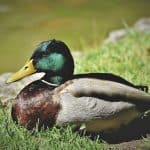Common Name: Gray Heron
Scientific Name: (Ardea cinerea)| Size | Diet | Range in Hawaii | Status in Hawaii |
|---|---|---|---|
| 36 in. - 39 in. | fish, amphibians, insects and crustaceans | Northwestern Hawaiian Islands | Least Concern |
The Great Blue Heron, also known as Ardea herodias, is a wading bird species that is native to North and Central America. While the species is not native to Hawaii, it has been known to make occasional appearances on the islands as a non-breeding visitor. With its majestic appearance and graceful behavior, the Great Blue Heron is a fascinating bird species that has captured the attention of birdwatchers and avian enthusiasts around the world.
In this article, we will explore the world of the Great Blue Heron, its unique characteristics, and its occasional presence in Hawaii.
Great Blue Heron
Appearance
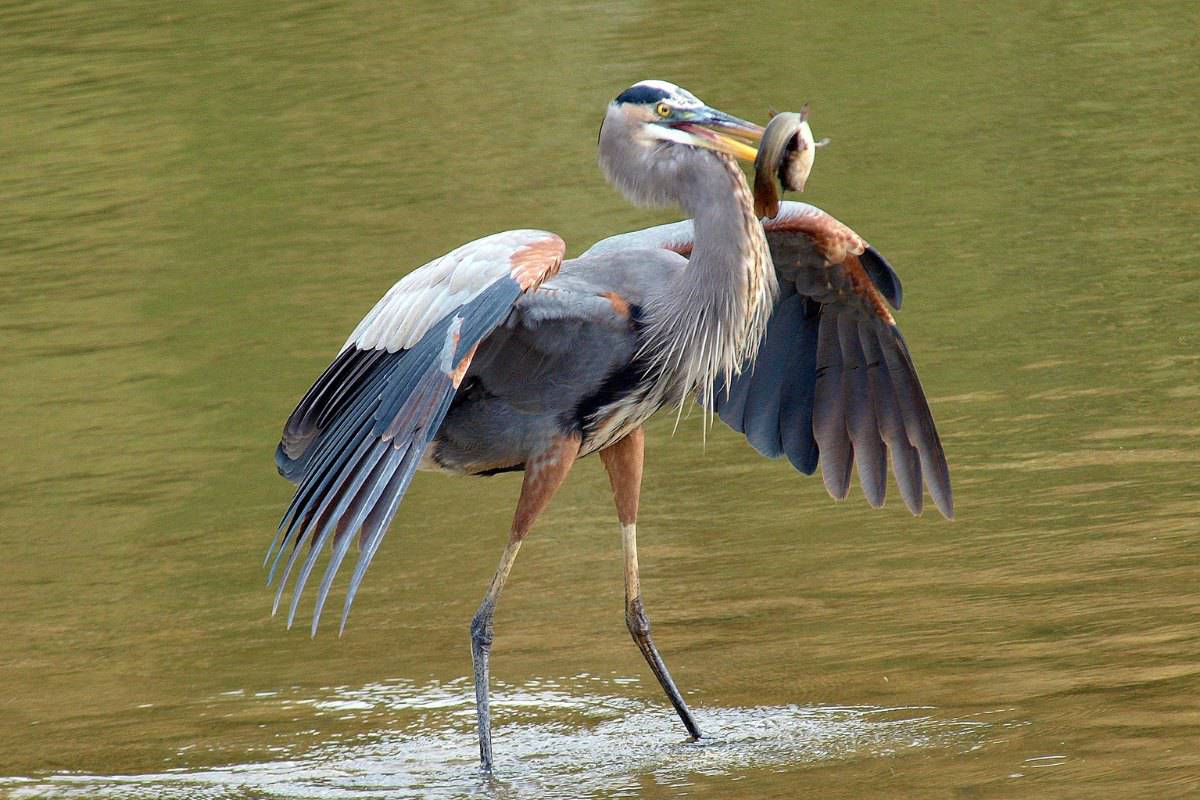
The Great Blue Heron stands as a striking embodiment of elegance in the avian world. With a majestic height ranging from 38 to 54 inches, it commands attention. Its plumage is a symphony of blue-gray hues, accentuated by subtle black streaks and a plume of feathers atop its head.
Its formidable wingspan, often exceeding 6 feet, dominates the skies as it soars gracefully. Its long, dagger-like bill and distinctive neck shape contribute to its regal silhouette. Whether poised in tranquil stillness by the water’s edge or taking flight with a deliberate grace, the Great Blue Heron’s appearance is a captivating sight to behold.
Diet
The Great Blue Heron is a consummate hunter with a diverse and discerning palate. Its diet is a masterpiece of adaptability, encompassing a range of aquatic and terrestrial delicacies. Wading patiently in shallow waters, this magnificent bird preys upon fish, amphibians, and crustaceans with its lightning-quick strike.
Its sharp eyes and precise aim make it a formidable fisher. Yet, its culinary repertoire extends beyond water creatures; it’s not uncommon to see the heron stalking small mammals, insects, and even reptiles.
Nesting

With an air of regal elegance, these statuesque birds meticulously construct their nests in treetops or reedy marshes, turning these chosen spots into avian high-rise apartments. Striking a balance between architectural prowess and resourcefulness, they craft their homes using twigs, grasses, and feathers, ingeniously weaving a cozy cradle for their future chicks.
These majestic birds, known for their towering height and stunning blue-gray plumage, transform from solitary fishermen into devoted parents during nesting season. Watching a pair of Great Blue Herons collaborate on nest building is akin to witnessing a delicate ballet of avian teamwork. The male gathers materials and presents them to the female, who masterfully arranges the components, ensuring structural integrity and comfort.
Perched high above the ground or nestled amidst the lush wetlands, the Great Blue Heron’s nest offers a front-row seat to the natural world. As the incubation period begins, these birds become sentinels of patience, diligently guarding their precious eggs from predators and the elements.
Behavior
One of its most mesmerizing behaviors is its hunting technique. Standing motionless in shallow waters like a contemplative statue, the heron is a picture of patience as it waits for the perfect moment to strike.
Suddenly, with lightning speed, its dagger-like bill darts underwater, spearing fish or amphibians with astonishing accuracy. This ability to transition from utter stillness to explosive action underscores the heron’s prowess as an apex predator.
Equally captivating is the heron’s courtship dance. During the mating season, these birds transform into performers, engaging in an elaborate ballet of twisting necks, fluttering wings, and synchronized steps. This elaborate display not only serves as a means of attracting a mate but also highlights the beauty of nature’s intricate courtship rituals.
Furthermore, the Great Blue Heron is a solitary creature, maintaining a dignified distance from its fellow herons even while sharing a hunting ground. Its solitary nature mirrors a sense of independence and self-sufficiency, emphasizing its prowess as an individual within a complex ecosystem.
Yet, this avian marvel also reveals a softer side in its role as a nurturing parent. Once the eggs hatch, the heron exhibits unwavering dedication to its offspring, tirelessly foraging for food and shielding the chicks from harm. The tenderness and care it shows to its young stand in contrast to its predatory hunting, revealing the multi-dimensional character of this remarkable bird.
Habitat
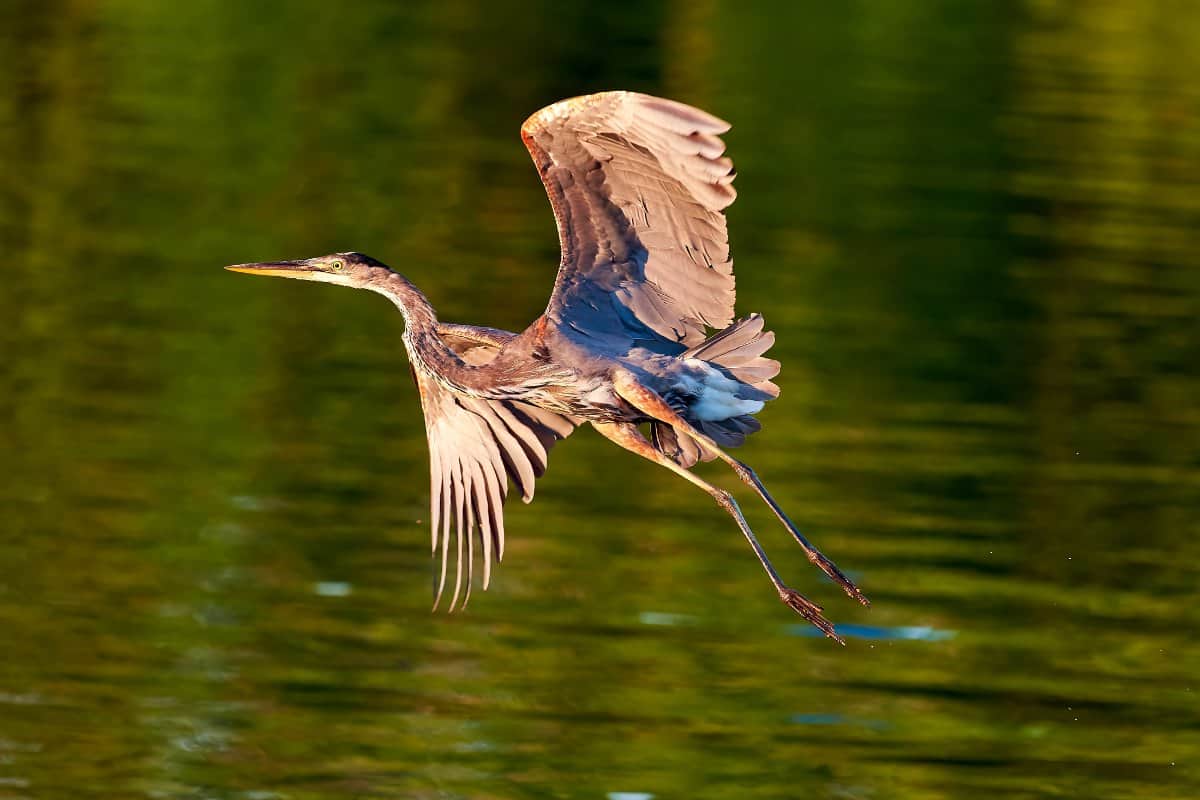
The Great Blue Heron finds its enchanting habitat in a range of wetland landscapes, from serene freshwater marshes to coastal shores. With its iconic presence, it stands at water’s edge or wades through shallow waters, showcasing its patient fishing skills. Tall trees offer nesting sites and scenic viewpoints, while tidal flats become its hunting ground along the coast.
Range
The Great Blue Heron is a non-breeding visitor to Hawaii, occasionally identified as the A.h. fannini subspecies. It has been observed in the Southeastern Hawaiian Islands, including Kaua’i, O’ahu, Moloka’i, Maui, and Hawai’i Island. However, the exact number of birds reaching the islands is challenging to determine due to their regular movements between locations and islands.
Conservation Status
The conservation status of the Great Blue Heron serves as a reminder of our intertwined role in safeguarding the natural world. Classified as a species of “Least Concern” by conservation organizations, these magnificent birds still face ongoing challenges.
Interesting Facts
1. Symbolic significance
The Great Blue Heron holds cultural significance in many indigenous societies, often symbolizing patience, determination, and the ability to navigate both the physical and spiritual worlds.
2. Color variation
While their name suggests a predominantly blue color, the Great Blue Heron’s plumage can appear gray or even purple in certain lighting conditions. Their necks often display a distinctive black stripe.
3. Feather “powder”
Herons have specialized feathers called powder down feathers that continuously disintegrate into a fine powder. This powder helps to waterproof their feathers and maintain their insulation.
4. Social display of plumage
During the breeding season, these herons exhibit striking visual displays by fluffing up their plumage and raising their head crests. This visual exhibition is often accompanied by loud calls.
5. Wing span utilization
To regulate body temperature, Great Blue Herons can adjust their wing positions, extending them away from their bodies to release excess heat when necessary.
Frequently Asked Questions
1. How long do Great Blue Herons live?
In the wild, these herons can live for over 15 years. Their lifespan can vary due to factors such as predation, habitat availability, and human interference.
2. Are Great Blue Herons protected by conservation laws?
Yes, many countries have laws and regulations in place to protect Great Blue Herons and their habitats. These laws help ensure the conservation of these magnificent birds and the ecosystems they rely on.
3. Can Great Blue Herons swim?
While they are not strong swimmers, Great Blue Herons can float on the water’s surface and use their wings to help balance. However, they are more comfortable wading or flying.
4. How do Great Blue Herons interact with humans?
They generally avoid human interaction, but they may become accustomed to human presence in certain areas. They can be spotted near fishing docks or urban waterways where their hunting opportunities increase.
5. How do Great Blue Herons interact with other bird species?
They often compete with other water birds for food resources in their habitats. They may also engage in “kleptoparasitism,” where they steal food from other birds, including their own kind.
